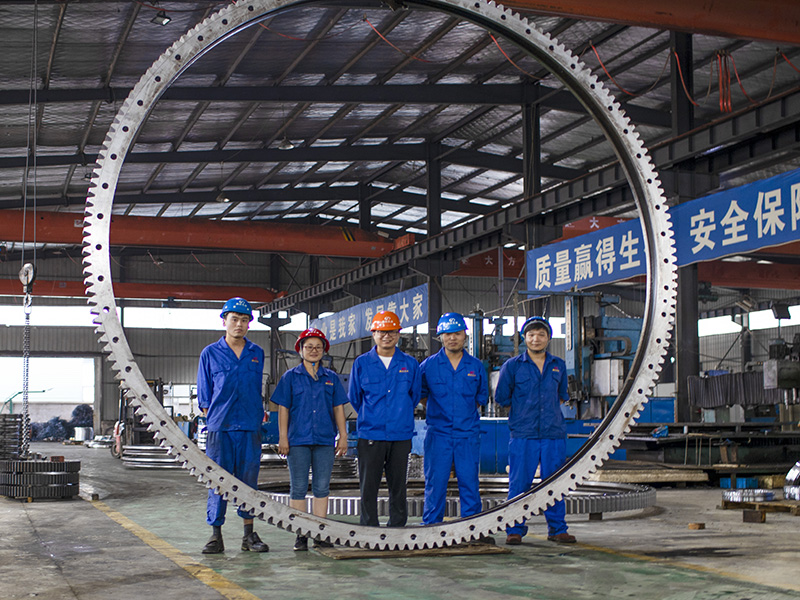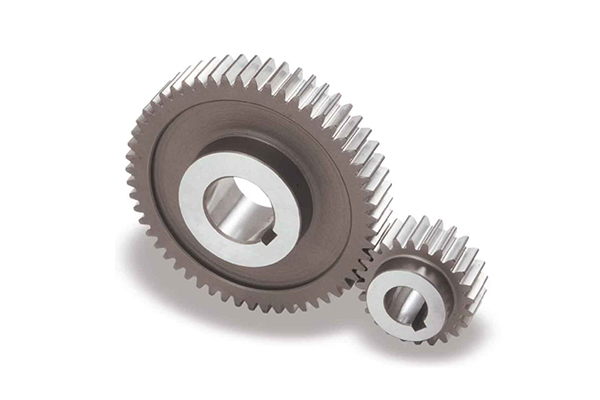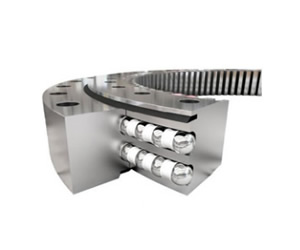
Pinion Gear vs. Spur Gear: Choosing the Right Motor Pinion or Larger Pinion for Your RC Car
2025-01-21
Have you ever wondered how to make your RC car go faster or climb steeper hills? A big part of the answer lies in the little gears that connect your motor to the wheels: the pinion gear and the spur gear. Think of them like the pedals and gears on a bicycle. This article will help you understand how these gears work together and how choosing the right pinion size can dramatically change your RC car’s performance. We’ll explore the difference between a smaller pinion and a larger pinion, and how they affect your RC car’s torque and top speed. Understanding this is key to getting the most out of your rc experience, whether you’re into bashing or racing. So, buckle up and get ready to learn about the important role of the spur gear and pinion gear!
1. What Exactly is a Pinion Gear in RC Cars and Why is it Important?
The pinion gear is a small, usually metal or hardened plastic gear that sits directly on the motor shaft of your rc car. It’s the first gear in the power transmission system. When your motor spins, the pinion gear spins with it, transferring that rotational force to the next gear in line – the spur gear. Think of it as the starting point of the power journey from the motor to your wheels. Its importance can’t be overstated; the size of the pinion directly influences how your rc car performs. A larger pinion means the motor has to work harder to turn the spur gear, resulting in a different gear ratio compared to using a smaller pinion. Without a pinion gear, the power from the motor wouldn’t be effectively transferred to drive your buggy or truck.
2. Spur Gear in RC Cars: How Does it Work with the Pinion?
The spur gear is typically a larger gear than the pinion, and it meshes directly with the pinion gear. Imagine two interlocking circles with teeth; that’s essentially how they work. As the pinion rotates, its teeth push against the teeth of the spur gear, causing it to turn. The difference in size between the pinion and the spur gear is what creates the initial gear ratio. This gear ratio is crucial because it determines the balance between torque (the twisting force that helps you accelerate and climb) and top speed. A larger spur gear relative to the pinion will give you more torque but potentially lower top speed, while a smaller spur gear will do the opposite. The spur gear is a key component in the gearbox of your rc car, working in tandem with the pinion gear to deliver power to the wheels.

3. Smaller Pinion vs. Larger Pinion: What’s the Real Difference in RC Performance?
The choice between a smaller pinion and a larger pinion is fundamental to tuning your rc car’s performance. A smaller pinion means the motor spins more times for each revolution of the spur gear. This results in more torque and quicker acceleration. Think of it like starting in a lower gear on a bicycle – you can get up to speed quickly. However, a smaller pinion will usually limit your top speed. On the other hand, a larger pinion means the motor spins fewer times for each revolution of the spur gear. This translates to a higher top speed because the wheels turn faster for each revolution of the motor. However, you’ll experience less torque and slower acceleration, similar to starting a bicycle in a higher gear. Choosing the right pinion size depends entirely on what you want your rc car to do.
4. How Does the Pinion Gear Affect My RC Car’s Torque and Acceleration?
As mentioned, the pinion gear has a significant impact on your rc car’s torque and acceleration. Using a smaller pinion effectively lowers the gear ratio. This mechanical advantage provides more torque, which is the force that gets your buggy moving quickly from a standstill and helps it climb over obstacles. With more torque, your rc car will have better acceleration, meaning it can reach its top speed faster. This is especially beneficial for offroad driving, where you need that extra burst of power to navigate uneven terrain. Conversely, a larger pinion reduces torque and acceleration because the motor has to work harder to turn the wheels from a stop.
5. Conversely, How Does the Pinion Gear Influence Top Speed and RPM?
While a smaller pinion enhances torque and acceleration, a larger pinion is your ticket to higher top speed. By using a larger pinion, you’re essentially increasing the distance your rc car travels for each revolution of the motor. This translates directly to a higher top end speed. The rpm (revolutions per minute) of the motor also plays a role. A larger pinion allows the motor to translate its high rpm into faster wheel speeds. However, it’s crucial to remember that while you gain top speed with a larger pinion, you sacrifice some acceleration to get there. It’s a trade-off, and finding the right balance is key.
6. Considering the Gear Ratio: Is a Higher or Lower Ratio Better for My Needs?
The gear ratio is the relationship between the number of teeth on the spur gear and the number of teeth on the pinion gear. It’s calculated by dividing the number of teeth on the spur gear by the number of teeth on the pinion gear. A higher gear ratio (achieved with a larger spur gear or a smaller pinion) means more torque and faster acceleration, ideal for crawling, climbing, and short bursts of speed. A lower gear ratio (achieved with a smaller spur gear or a larger pinion) means higher top speed, better suited for racing on open tracks. Think about how you typically use your rc car. Do you enjoy bashing and tackling tough terrain, or do you prefer high-speed runs on smooth surfaces? Your answer will guide you towards the optimal gear ratio.

7. What Role Does the Motor Play in Choosing the Right Pinion Size?
The motor is the heart of your rc car, and its characteristics play a crucial role in determining the appropriate pinion size. A brushless motor, known for its high power and efficiency, can generally handle a larger pinion better than a brushed motor. A more powerful motor can provide enough torque even with a larger pinion to achieve good acceleration while still reaching high top speed. If you have a less powerful motor, using a larger pinion might cause it to work harder and potentially overheat. In such cases, a smaller pinion is often a safer choice as it reduces the load on the motor. It’s all about matching the gearing to the power output of your specific motor to achieve the best performance and prevent damage.
8. Can Using the Wrong Pinion Gear Cause My RC Motor to Overheat?
Yes, absolutely! Using the wrong pinion gear can definitely lead to your rc motor overheating. If you use a larger pinion that puts too much load on the motor, especially with a less powerful motor or in hot conditions, the motor will have to work harder to turn the gears. This increased effort generates more heat. Over time, excessive heat can damage the motor, reducing its lifespan and performance. Similarly, undergearing (using a smaller pinion than optimal for the motor) can also cause some motors to spin too fast and generate excessive heat, although this is less common. It’s important to monitor your motor temp after making gear changes, especially when experimenting with different pinion size options.
9. Are There Any Recommended Posts or Guides for Specific RC Models or Motors?
Absolutely! The rc community is vast and full of helpful information. For specific rc models like the Traxxas Rustler or vehicles using the VXL system, there are countless online forums and guides, including discussions on platforms like tamiyaclub.com, that offer recommended posts on gearing. These resources often provide insights based on firsthand experience with specific combinations of motors, esc’s, and vehicles. Searching for your specific model and keywords like "pinion gear", "gear ratio", or "spur gear" will likely yield valuable results. Remember, reddit is anonymous, so be sure to cross-reference information from multiple sources. These communities often share information on optimal gearing for different terrains and driving styles.

10. How Do I Verify Your Email and Check Your Inbox After Making Gear Changes?
Okay, while this might seem out of place in a discussion about pinion gears, the underlying principle is important: verifying your changes and checking the results! After you change your pinion gear, it’s crucial to test your rc car and monitor its performance. This isn’t about checking your email, but rather checking your motor temp, observing the acceleration, and noting the top speed. Run your car for a few minutes and feel the motor. If it’s excessively hot, you might need to go back to a smaller pinion. Observe how quickly your car gets up to speed and whether it achieves the desired top end. This "verification" process ensures you’ve made the right choice and that your motor is operating within safe limits. Fine-tuning your gear setup is part of the fun of the rc hobby!
By understanding the relationship between the pinion gear, spur gear, and gear ratio, you can significantly improve your rc car’s performance and tailor it to your specific needs. Remember, a smaller pinion generally means more torque and faster acceleration, while a larger pinion leads to higher top speed. Always consider your motor‘s capabilities and monitor its temperature to prevent overheating. Happy bash-ing!
Key Takeaways:
- The pinion gear and spur gear work together to transfer power from the motor to the wheels.
- A smaller pinion provides more torque and faster acceleration.
- A larger pinion allows for higher top speed.
- The gear ratio is determined by the number of teeth on the spur gear and pinion gear.
- Choosing the wrong pinion size can cause your motor to overheat.
- Consider your motor‘s capabilities when selecting a pinion size.
- Monitor your motor temp after making gear changes.
- Online communities and guides offer recommended posts for specific rc models.
- Testing and observing your rc car’s performance is crucial after changing gears.
We, at Xinda Slewing Bearing, while specializing in high-quality slewing ring bearings, understand the importance of every component in a mechanical system, just like the crucial role of the pinion gear in your RC car. Whether you’re looking for robust bearings for construction equipment or precise bearings for medical machinery, we’ve got you covered. Our products, like our Single Row -Ball Bearing Slewing Rings, are designed for high load capacity and smooth rotation. Just as the right pinion ensures optimal power delivery, our bearings ensure smooth and reliable rotation in your applications. We also offer Double Row- Ball Bearing Slewing Rings, known for their exceptional stability. For heavier-duty applications, consider our Three Row -Roller Bearing Slewing Bearings. And if you’re working with inch-based designs, explore our range of Inch size Slewing Ring Bearings. Just as understanding pinion size is crucial for RC enthusiasts, understanding bearing specifications is essential for engineers and manufacturers. Contact us to find the perfect bearing for your needs!
Copyright © 2024 Xinda Slewing Bearing. All rights reserved. Terms of Use.





